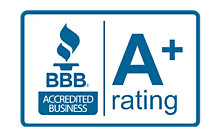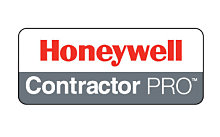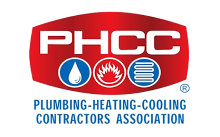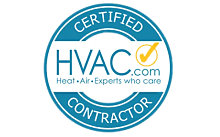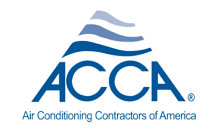Indianapolis Aeroseal Duct Sealing Service
The air duct system is a notorious source of energy waste for the HVAC system and the home – the average home loses 20 to 30% of conditioned air through air leaks in ducts. Faulty duct runs are responsible for leaking hundreds of cubic feet of air per minute. These losses generate higher energy bills for the homeowner, as well as a range of other troublesome issues including poor heating and cooling temperature control, humidity issues, and poor indoor air quality.
In many situations, duct sealing is a recommended course of action used to repair damaged ducts and close leaks. There are many methods used for sealing air leaks in a home or building’s duct system, some of which homeowners can apply DIY-style. With the great amount of energy waste generated by the average duct system, it pays to invest in professional sealing using Aeroseal, which reduces up to 90% of air loss.
Williams Comfort Air performs Aeroseal duct sealing for homeowners in Indianapolis and the surrounding communities. Our NATE-certified technicians have the advanced knowledge it takes to accurately locate leaks and apply Aeroseal ducting seal technology for a maximum reduction in air loss.
Contact us today to request an estimate for duct sealing at your Indianapolis area home.
What Is Aeroseal Sealing for Ducts?
Aeroseal duct sealing is a specialized sealing process that uses a safe, non-toxic substance (the primary component is used in chewing gum) designed to seal these money-draining leaks. This method of sealing air leaks has been used in hospitals and government institutions alike with great success.
Benefits of duct sealing with Aeroseal include:
- Save up to 40% every month on your energy bill.
- Improve your family’s comfort in those hard-to-heat or cool rooms as air is directed to where it is designed to go, and not into your basement, attic, or crawl space.
- Improve the air quality for your entire family by reducing dust, allergens, and indoor air pollutants in your home that return air ducts pull in and send through your HVAC system.
- Keep your heating and cooling equipment in service longer by reducing wear and tear that results from overwork.
- There’s no disruption to your home, and the Aeroseal process is non-invasive yet offers superior sealing without cutting access holes.
Air Leaks Create Discomfort in More Ways Than One
Leaks in air ducting create issues beyond energy waste alone – a leaky air duct leads to noticeable discomfort inside the home’s living areas. Leaks allow conditioned air to seep into the attic or crawl space before it is able to make its way to your home’s interior.
The ducts are installed to run through areas of the home that are typically unconditioned, meaning they don’t need to receive heating or cooling from the HVAC system. The fact that duct leaks divert heating and cooling energy into these unused and unconditioned areas means your family gains zero benefits from as much as 30% of the heating and cooling your furnace, heat pump, boiler, or air conditioner created.
On top of that, a duct that leaks into an unconditioned space opens the door for contamination that negatively impacts air quality. Air that lingers inside an attic or crawlspace is typically not treated in any way if the area is not connected to the home’s HVAC system and ducts. It is often filled with more particles from dust, building materials, allergens, even pest waste – a leak in a duct creates a direct path for these pollutants to enter the system, mix with your conditioned air, and travel into your home to expose your family.
Moisture issues are also very common in unconditioned areas of a home, which means a duct leak could allow mold spores into the ducts – they have the potential to grow and spread in your ducts, HVAC system, and home, where exposure can be damaging to your health. If you’re lucky, there’s no mold – but the increased moisture throws off humidity levels inside the home. More humidity also causes your cooling system to work harder, as the unit now has an increased volume of moisture to remove from the indoor air.
Because a significant volume of heated and cooled air is able to escape the duct, rooms throughout the house do not receive the appropriate amount of warmed or cooled air for correct temperature control. The HVAC system must make up for this loss by creating more conditioned air to send to the living areas. Working harder for a longer period each cycle, the HVAC system consumes more energy as it struggles to keep your home comfortable. Higher energy consumption by the system means higher energy bills for you, unfortunately – most Indianapolis homeowners wouldn’t be thrilled to pay 30% more for something they gained no benefit from!
Beyond wasted energy and increased utility costs, the end result of duct leaks is discomfort. Rooms don’t receive enough conditioned air, which makes achieving even temperatures practically impossible across the home. Hot or cold spots are common, as well as rooms that never seem to get or stay warm or cool enough.
Friendly Service. Certified Technicians. Happy Clients.
Our Guarantees
No Guesswork
When we say "This is how much it is" that's how much it is. Period.
"It Will Work"
No excuses or stories, just service when you need it!
100% Money-Back Satisfaction
We'll make it right or remove the system and return 100% of your money.
Client Respect
If we dirty it, we'll clean it. If we damage it, we'll fix it. Plain and simple.
Safe and Secure
The right company and the right people in your home, ensuring your job is done right and your peace of mind is protected.
Air Duct Issues? Calls Are Answered 24/7/365
Testing for Duct Leaks
Duct sealing can be a difficult task. The first step of assessing the ducts for leaks is critical and often one of the hardest to perform, especially when it comes to figuring out where they are and how to reach them – due to the locations in which a home’s ducts are installed, all too often leaks are in a hard-to-access place. Ducts are usually hard to reach in general, and without highly trained technicians, the evaluation can inadvertently damage your duct system.
If you suspect your duct system is losing air and energy, Williams Comfort Air verifies the issue by testing the ductwork for leaks. To conduct this test, the technician pressurizes the duct system by blocking airflow from vents and registers in your home. With these points blocked off, we are able to identify cracks or holes that are leaking air in the ductwork. Duct leaks lose air through gaps often found at the seams in the ductwork and air handler. Once the technician is able to verify the presence of leaks in the duct, air leakage is measured to determine if you should consider duct sealing for your home.
How Duct Leaks Are Sealed with Aeroseal
When sealing ducts, Williams Comfort Air utilizes the Aeroseal process to flood the sealant throughout the duct system. The entire process is monitored by your technician, who is able to share the duct system’s improved performance in a graph for your reference. You receive a printed report showing the decrease in air leakage based on the original pressurized test that was conducted prior to the application of Aeroseal.
The duct sealing process introduces Aeroseal sealant to the pressurized duct system while the heating and cooling system runs. The sealant particles are suspended in the air as they are pushed through the system. The particles will stick to the edge of a breach, sealing the leak. Duct sealing solves the air leakage problem without having to access your ducts through the walls or other tricky areas. With Aeroseal, leaks are closed from the inside!
Why Not DIY My Duct Leaks?
Do-it-yourself duct sealing methods have been around forever, but the products and processes do not necessarily deliver the best result. Addressing leaks in the duct requires a good amount of knowledge and know-how, which you may not possess – and that’s perfectly ok, not everyone is supposed to be an HVAC pro!
A common issue homeowners have with DIY duct sealing is selecting the right materials – make sure you know the right products for the task. We’ve all heard of duct tape before, yes? Did you know that duct tape is not actually meant to be used on ducts? The name is incredibly misleading and causes many DIYers to pick up a product that is entirely useless for the job. When used to cover leaks, duct tape fails in a short period of time.
The right kind of “tape” to use for this project is foil tape. It’s fairly easy to apply, but it also isn’t a very reliable method. It’s prone to failure especially when used on ducts exposed to dirt or oil.
Mastic sealant is the best product for use when sealing ducts yourself. The sealant is applied to the duct using a paintbrush or even a caulk gun if you’d like. If gaps in the duct are significant in size, you can combine mastic sealant with other products, such as a portion of fiberglass mesh tape to cover a larger area.
While mastic sealant is a good product for the job, a knowledge of how to complete the job correctly is important for generating the energy savings you expect. When in doubt, leave this project to the professionals – you’ll save time, money, and probably a few headaches.
Frequently Asked Questions
Leaks allow dust to spread easily throughout your home. Duct sealing will help reduce the amount of dust, allergens, and indoor air pollutants in your home. It does not prevent dust entirely from being in the home.
Duct sealing can save you up to 25-40% on your energy bills every month.
In most instances, duct cleaning is not required prior to a duct sealing service. Your technician should inspect the situation and advise whether it will be necessary to clean your ductwork prior to sealing.
Aeroseal duct sealing is a specialized process that uses a non-toxic substance (the primary component is used in chewing gum) designed to seal these money-draining leaks.
Aeroseal duct sealing is guaranteed for 10 years and stress tested to last for 40 years in residential homes.
There is a very mild odor similar - similar to a glue type of smell - during the sealing process. The odor completely goes away by the next morning.
Aeroseal dries in around 2 hours.
Yes, it’s non-toxic and safe. The ingredients are commonly found in hairspray and chewing gum.
Aeroseal is able to plug leaks up to a 5/8th of an inch.
To be safe, it’s recommended that any sensitive electronics are covered before the sealing service begins.
Aeroseal certified technicians are trained to protect your HVAC system and accessories during the duct sealing service.
The sealing process only seals the leaks, there will be no remaining sealant sitting in your ductwork, other than the sealant that’s filling a leak.
Award Winning & Industry-Leading
Who Is MAX?
Max is an important part of our team. He is more than just a cartoon character. Max represents our commitment to quality work, craftsmanship, pride, and our passion to serve our clients and community. We celebrate this mentality through Max because these are the values that drive us to be the area’s most complete and comprehensive home service company. So, now when you see Max, you’ll know the story behind the man with the mustache!




